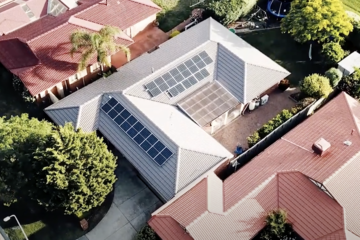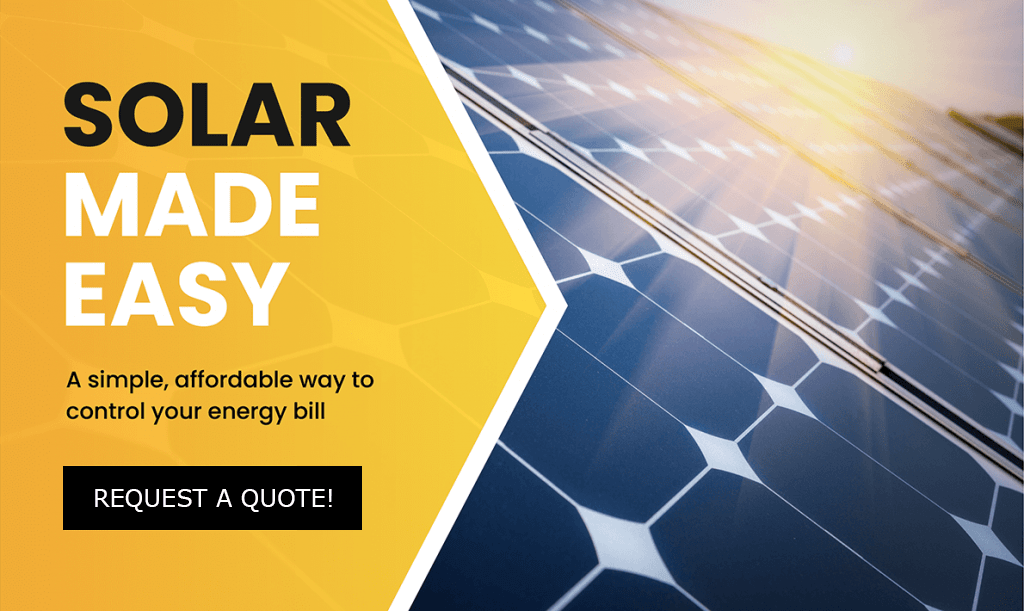
Driving down the street, you’ll notice that solar systems being installed are much larger than five years ago. Back then, a 3kW system (with around 12 panels) was all -the-go. Virtually no-one had 10 kilowatts.
But the appetite for ever-bigger solar systems amongst homeowners is virtually unstoppable. Aussies love solar! The average system size shot up to 8.8kW in December 2020 according to the Australian Energy Council.
Now, the average size system we’re selling – like most of the industry – is firmly at the 10kW mark.
There are six reasons:
Prices for solar panel systems have dropped by more than 70% in the last 10 years. Depending on where you live, the typical price of one of our 10kW solar systems ranges from $5,500 to $9,000 after rebates.
Small-scale Technology Certificates (STCs), are a form of Federal Government rebate for solar. The more solar panels you get installed, the more STCs your system will be eligible for. STCs work as a point-of-sale discount. On average, STCs reduce the cost of your system by around 30 percent.
Power output from each solar panel is increasing. A couple of years ago, the average was around 270 watts per panel. Now, it’s 370 watts. This means it’s now physically possible to fit the panels for a 10kW system on most good-size homes.
| 2-3 years ago | Today | Today | |
| Wattage per panel (avg) | 270 watts | 370 watts | 400 watts |
| # panels needed for 10kW (approx.) | 36 panels | 27 panels | 25 panels |
| Roof space required (approx.) | 64.8m2 | 48.2m2 | 45m2 |
When 270 watt was the standard panel wattage, you would have needed 36 panels for a 10kW solar system taking up 64.8m2 of roof space. Now, with the standard being 370 watts, you’d only need 27 panels. And if you went for a 400 watt panel, you’d only need 25 and less roof space yet again.
Demand for home battery storage is increasing exponentially as battery prices drop, more batteries come on the market and electricity bills rise. Storing your solar energy maximises the amount of free solar you use in your home and reduces what you need to buy from the grid.
The average price of mains power in Australia is around 30 cents per kilowatt hour. If you export your excess solar (rather than store it), you’re getting between 6c and – if you’re very lucky – 20c per kilowatt hour. The average is around 7c.

This means that by using your stored solar energy to power your home at night, you don’t have to buy it at around 30 cents. Whilst you are forgoing the small amount you could have sold it to your electricity retailer for (say 7c), this is more than made up by the savings. You’re better off by around 21 cents per kilowatt hour.
With a big enough solar system (i.e. 10kW) and a battery with decent storage capacity, you could be getting near-zero electricity bills.
Plus, with the right battery brand you’ll also get protection from blackouts – an advantage that only you can put a value on.
With petrol prices going through the roof, it’s no wonder that that over 50% of Australians say they will consider buying an electric vehicle as their next car.
The question is: how much solar power will you need to charge your EV?
The statistic is that you’d need to add around 2kW of solar panels to your roof to offset the charging of an electric car that is driven ~50km per day. If you want to drive it further, you’d need even more solar.
To this stat, factor in that the average Australian home uses around 20 kilowatt hours of electricity a day (which generally equals a 6kW solar system).
Put the two together and it’s easy to see why people are getting 10kW of solar installed in order to make their homes EV-ready.
As State and Federal Government’s announce new plans to achieve climate goals, one of the likely casualties will be gas.
As an example, the Victorian Government recently announced a proposed moratorium on gas connections to new homes from 2025 to help the state achieve its 2030 target to cut carbon emissions by up to 50 per cent.
Expect to see more government policies of this type over the coming months, as the need to tackle climate change stays firmly centre stage.
For homeowners, it makes sense to replace gas appliances as they wear out with electric ones.
If you follow this advice, you’ll be in a strong position to move to an all-electric home and de-risk your property from exposure to escalating fossil fuel prices.
If you talk to people who got solar installed several years ago, and you’ll find most say they wished they’d got a bigger system. Hardly anyone will tell you that they should have gone for a smaller one.
Now, with the dawning of more rapid changes in the way we use electricity, it makes sense to get the biggest solar system you can afford.
Talk to us today. We’ll crunch the numbers and give you the information to decide whether 10kW is going to be right for your home.
We are available! Have a question? Text us here.
 Text Us
Text Us
I have a 4.9kw solar system with 18 panelsa nd a 12kw battery storage. If I need a 10kw solar system what will be the cost of installation. The make of the panela and inverter with three phase. I live in Baulkham hills. Please send ma a quote with all the details.
Thanks
Write more, thats all I have to say. Literally, it seems as though you relied on the video to make your point. You clearly know what youre talking about, why throw away your intelligence on just posting videos to your blog when you could be giving us something informative to read?